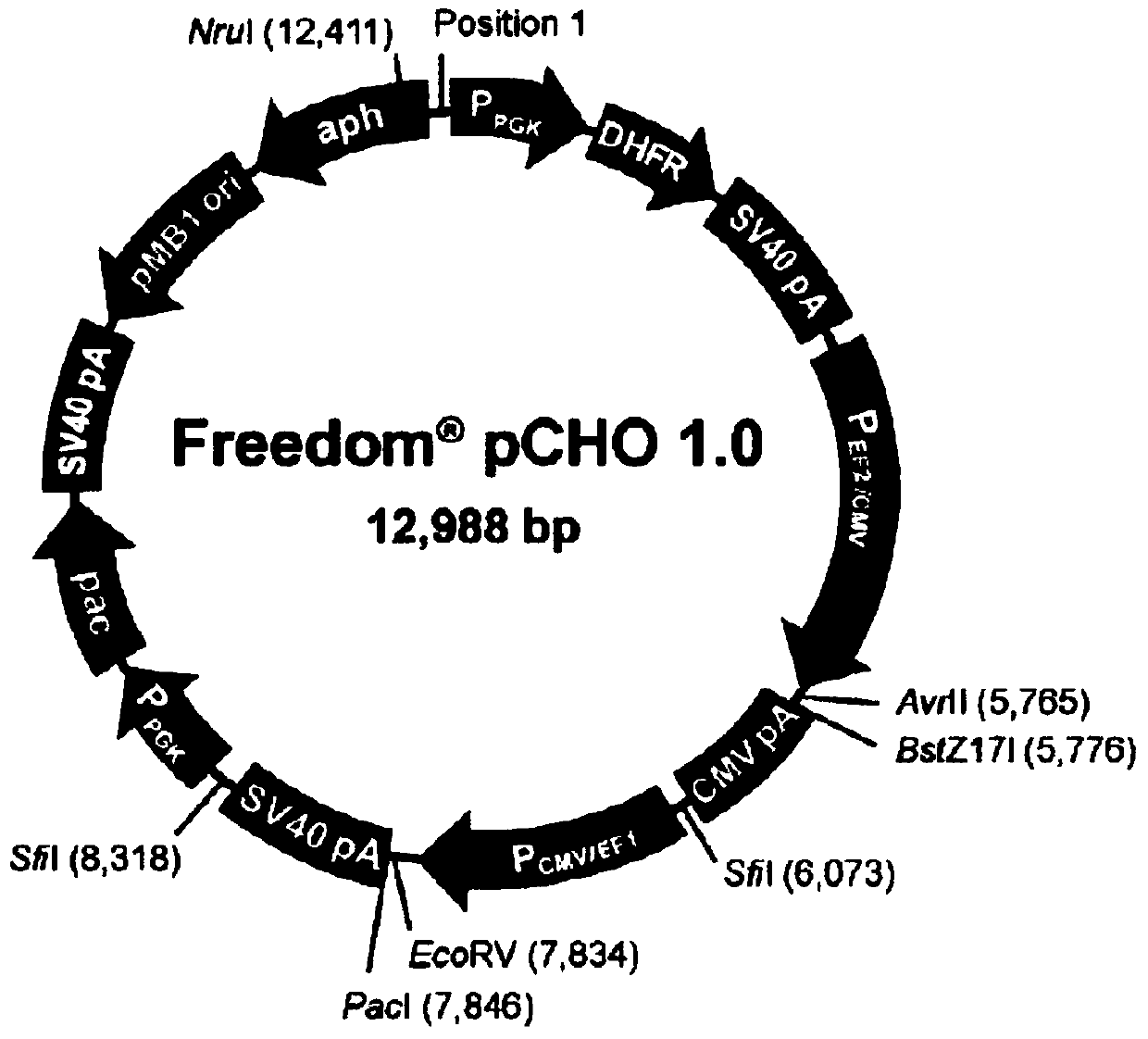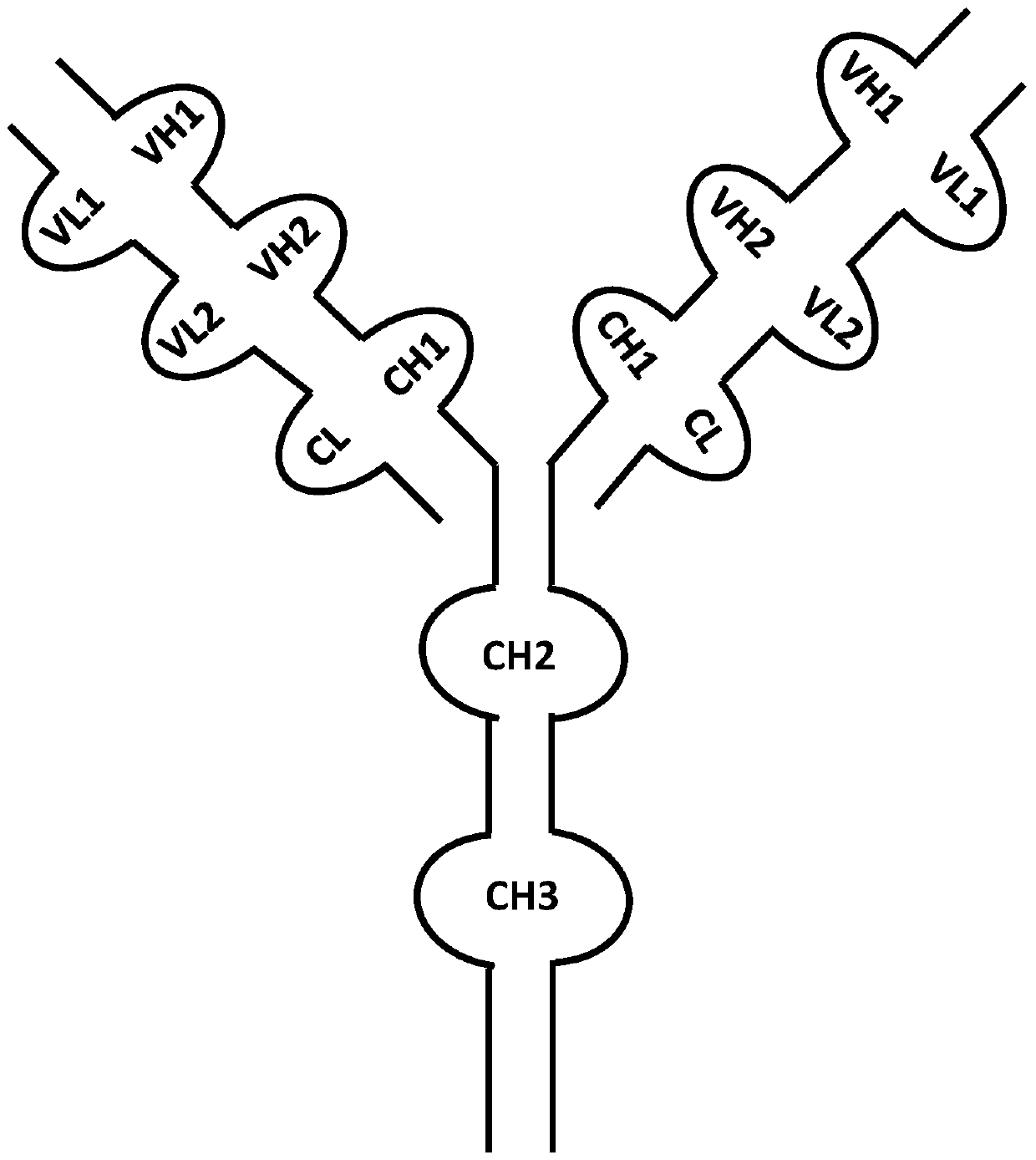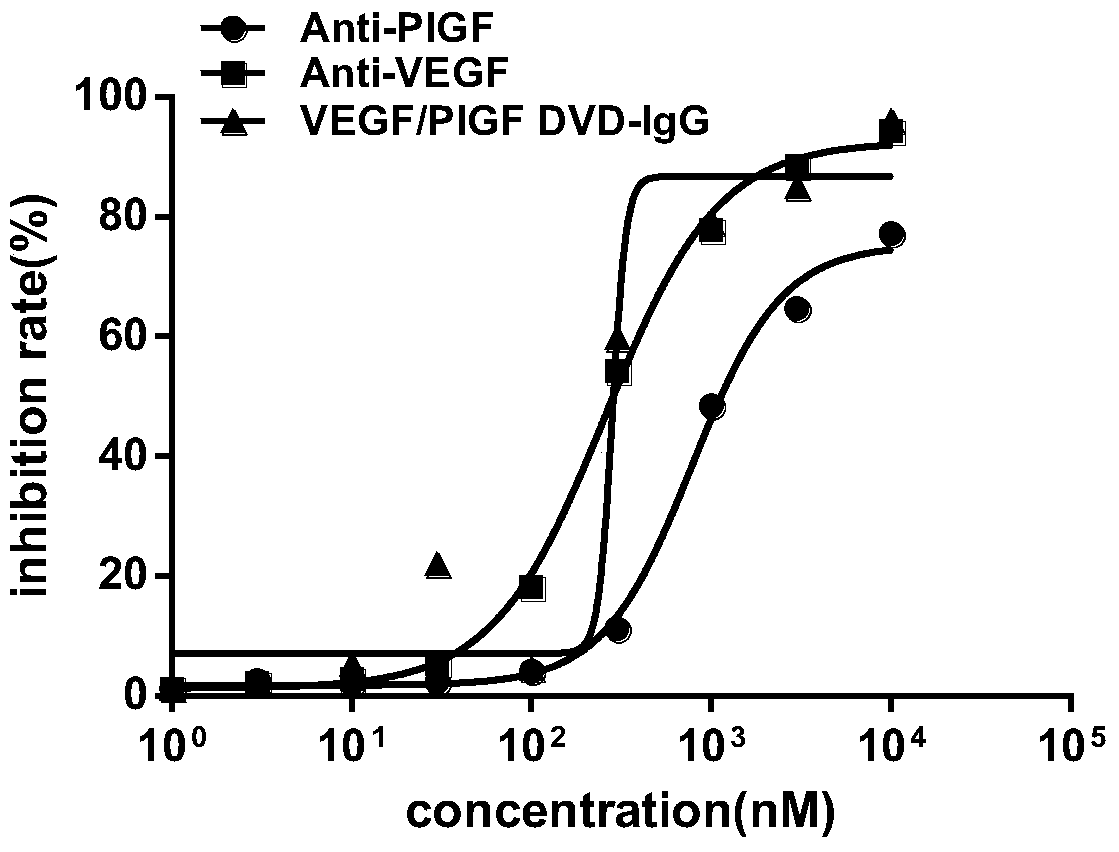Anti-vegf/pigf bispecific antibody, its preparation method and use
A bispecific antibody and carrier technology, applied in the biological field, can solve the problems of limited number of antibodies and high cost of antibodies
- Summary
- Abstract
- Description
- Claims
- Application Information
AI Technical Summary
Problems solved by technology
Method used
Image
Examples
Embodiment 1
[0040] Example 1. Cloning of Human Antibody Light and Heavy Chain Constant Region Genes
[0041]Lymphocytes from healthy people were separated with lymphocyte separation medium, and total RNA was extracted with Trizol reagent (product of Invitrogen Company). ) reports, respectively designed primers to amplify the antibody heavy chain and light chain constant region genes. All PCR reactions were hot-started, and the reaction conditions were: 94°C for minutes; 94°C for 45 seconds, 60°C for 45 seconds, 72°C for 1 minute and 10 seconds, 30 cycles; 72°C for 10 minutes. The PCR product was purified and recovered by agarose gel electrophoresis and cloned into the pGEM-T vector (purchased from Life Technology, the same below), and the correct clone was confirmed after sequencing verification. SEQ ID NO: 1 and SEQ ID NO: 2 show the nucleotide and amino acid sequences of the light chain constant region (CL), respectively. SEQ ID NO:3 and SEQ ID NO:4 show the nucleotide and amino acid ...
Embodiment 2
[0042] Example 2. Construction of anti-VEGF / PIGF bispecific antibody expression vector
[0043] Light chain VL1 (from anti-VEGF antibody, nucleotide sequence SEQ ID No.7), VL2 (from anti-PIGF antibody, nucleotide sequence SEQ ID No.5), heavy chain VH1 (from anti-VEGF antibody, nucleotide sequence The sequence of SEQ ID No.11), the nucleotide sequence of VH2 (from the anti-PIGF antibody, the nucleotide sequence of SEQ ID No.9) was synthesized from the whole gene by Shanghai Bioengineering Technology Service Co., Ltd. The light chain VL1 and VL2 nucleotide sequences were connected in series with Linker1 by the method of overlapPCR (see SEQ ID No.13 for the Linker1 nucleotide sequence), and were cloned into the pGEM-T vector. Then the nucleotide sequence of the double variable region gene (VL1-VL2) of the light chain and the nucleotide sequence of the constant region of the light chain of the human antibody were cloned into the pGEM-T vector by overlapPCR, and the positive clones...
experiment example 1
[0047] Experimental example 1. Biacore method to detect the affinity experiment of anti-VEGF / PIGF bispecific antibody and VEGF
[0048] The affinity of the anti-VEGF / PIGF bispecific antibody to VEGF (purchased from: R&D Company) was based on the BIAcore-2000 TM The association rate constants and dissociation rate constants measured by the surface plasmon resonance system were calculated. The biosensor chip CM5 was activated with N-ethyl-N'-(3-dimethylaminopropyl)carbodiimide hydrochloride (EDC) and hydroxysuccinimide for covalent coupling of VEGF. The VEGF buffer was exchanged for 20 mM sodium acetate (pH 4.8) and then diluted to about 50 µg / ml. An aliquot of the sample (35 µl) was injected at a flow rate of 2 µl / min to achieve approximately 700-1400 resonance units (RU) of coupled protein, followed by injection of 1M ethanolamine as a blocking agent. For the detection of the affinity between the anti-VEGF / PIGF bispecific antibody and VEGF, the anti-VEGF / PIGF bispecific anti...
PUM
 Login to View More
Login to View More Abstract
Description
Claims
Application Information
 Login to View More
Login to View More - R&D
- Intellectual Property
- Life Sciences
- Materials
- Tech Scout
- Unparalleled Data Quality
- Higher Quality Content
- 60% Fewer Hallucinations
Browse by: Latest US Patents, China's latest patents, Technical Efficacy Thesaurus, Application Domain, Technology Topic, Popular Technical Reports.
© 2025 PatSnap. All rights reserved.Legal|Privacy policy|Modern Slavery Act Transparency Statement|Sitemap|About US| Contact US: help@patsnap.com



